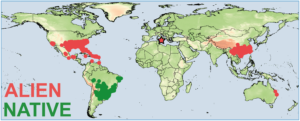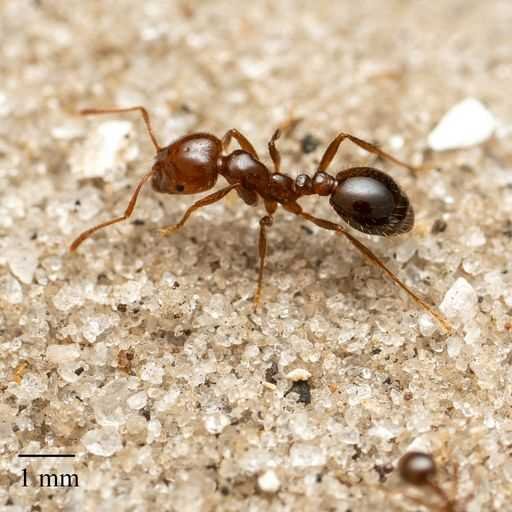An extremely invasive insect known as the red fire ant, which is notorious for its painful sting, has officially crossed the oceans and invaded Europe.
Scientists say they have been expecting this potentially devastating invasion for years. However, the confirmed presence of Solenopsis invicta in southern Italy may lead to massive health and environmental consequences as the red fire ant makes its way across the entire continent.
“Finding this species in Italy was a big surprise,” said Mattia Menchetti, the lead author of the paper detailing the red fire ants’ invasion, “but we knew this day would come.”
Red Fire Ants have Already Conquered Most of the Planet
Originally from South America, S. Invicta has spread as far and wide as China, Mexico, the United States, and even Australia. Researchers say some of that movement has been due to the clever creature’s ability to “fly into wind streams.”
But the majority of the red fire ant’s global expansion has been due to human activity, including the movement of cargo and plant products across the world’s oceans. In fact, the researchers behind this discovery say this European invasion is long overdue.
“For decades, scientists have feared that it would arrive,” said Menchetti. “We could not believe our eyes when we saw it.”


These Painful Invaders Have Been in Sicily for Years and Could Soon Conquer 50% of European Cities
To confirm that pictures of red fire ants in Europe they’d received were authentic, the researchers traveled to Sicily to see for themselves. Sure enough, after searching an area of just under 5 hectares, they found 88 total S. Invicta nests, some of which housed many thousands of workers.
After taking samples, the researchers began talking to locals about their possible interactions with the red fire ants. And to their surprise, the fire ants had been delivering their trademark stings in the region for years.
“The locals have been experiencing these painful things since at least 2019, so the ants have probably been there for a while,” says Menchetti. “And the real extension of the invaded area is probably larger.”
An analysis of the DNA of the collected samples showed that although Sicily is close to Africa, the invasive ants likely came from either China or the United States. Regardless of how they arrived, now that the red fire ants are here, the researchers have started to model how they might spread and the parts of Europe they may invade next. This involved an in-depth analysis of the wind patterns, suitability of local climates, and the potential effects of climate change.
According to the press release, their work revealed that “7% of the European continent is suitable for S. Invicta given current environmental conditions, and climate change will likely expedite their spread and population growth even further.” Even more concerning, their models found that as much as 50% of Europe’s cities are ripe for red fire ants to invade.
“This is especially concerning because many of the cities, including London, Amsterdam, and Rome, have large seaports,” explained senior author Roger Vila from the Institute of Evolutionary Biology in Spain, “which could allow the ants to spread rapidly to more countries and continents.”
Successfully Putting Down the Red Fire Ants Invasion Will Require Everyone’s Help
Given the widespread damage invasive species typically cause to their new environments, not to mention the incredibly painful sting of S. Invicta, the researchers say that the effort to limit their spread is already underway. Unfortunately, the goal of a complete eradication, like the successful effort undertaken in New Zealand, seems unlikely, so the team is focusing its efforts on limiting the spread as much as possible.
“To start, they’ll systematically inspect local areas to see if the species has already reached them,” the press release explains. “Then, they’ll begin a multi-year treatment plan to eradicate the nests and monitor the invaded sites carefully to make sure there aren’t any resurgence.”
It’s a model that has shown some success in China. But, the researchers note it will work best if everyday citizens become involved in the effort, including taking and sharing photos of suspected nests of invasive red fire ants.
“Citizens can play a very important role in this,” says Menchetti. “We hope that, with their help, we will be able to cover a wider area. This will help us track and spot all the possible areas invaded in the region.”
“There needs to be more awareness about this problem because the problem is already in Europe,” he added. “We need coordinated action, and we need it now.”
Christopher Plain is a Science Fiction and Fantasy novelist and Head Science Writer at The Debrief. Follow and connect with him on X, learn about his books at plainfiction.com, or email him directly at christopher@thedebrief.org.

